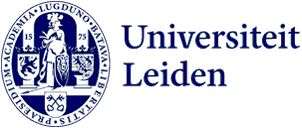
Cheating graphs: a lesson in statistics without arithmetic
Missing legends, illogical connections or three-dimensional graphs. There are many ways in which data can deceive. Five students took up the fight against misleading statistics. Their lesson series can now be found online.
‘We would like secondary school students to learn more about misleading statistics', says Soraya Schachtschabel, former student and co-developer. ‘For example, where you can encounter such statistics and especially that you should not take everything for granted.’
Reasoning under uncertainty
So, the students developed statistics lessons that do not involve any calculations whatsoever. Manon Boot, also part of the student team, explains: ‘It is mainly a training in media literacy. So, how to check whether information is reliable. That’s why our teaching package fits in with all kinds of subjects, such as mathematics, social studies or economics.’
'Teachers get the opportunity to get out of the content what they think is appropriate for their class'
Sanne Willems is a statistics researcher in psychology and supervised the students during and after their project. ‘In education, statistics is mainly seen as part of mathematics, but it is actually broader,' she says. 'Mathematics remain a handy skill for working out the details, but for the real basics of statistics you need very little mathematics. Statistics is mainly about reasoning under uncertainty.'
Not a boring lesson
The lesson package takes students into the world of misleading statistics in many different ways. For example, students can look for dishonest graphs themselves, there is a checklist to see if you are being misled by numbers, and the package includes a roleplay session during which students must explain statistics differently based on their role.

Matching the level
‘All these different methods give teachers the opportunity to get out of the pack what they think is appropriate for their class,’ explains Schachtschabel. ‘And we also give various suggestions to further adapt the lessons to the level of the class. That way, teachers can make it just that little bit more challenging for their pupils, if they want.’
Perfection takes time
The student team, also consisting of Annelies Smit, Neele Dijkstra and Jesse Welzenes, developed the teaching package as part of their Science Communication & Society final project. But that was more than a year ago. Reading through all the lessons again and processing all the feedback just takes time,' explains Boot. 'But because of that, we now have a lesson series that we know is suitable for classrooms.’
‘Furthermore, we all started our internships immediately after the final project. And shortly after that we went job hunting’, Schachtschabel adds. ‘But we managed to find each other again, and that just shows how much we wanted to put this lesson package out there.’
The lesson package may now be found online!
Do you like this teaching package and do you want to use it too? The teaching package can be downloaded free of charge from the KlasCement.net website.
KlasCement.net